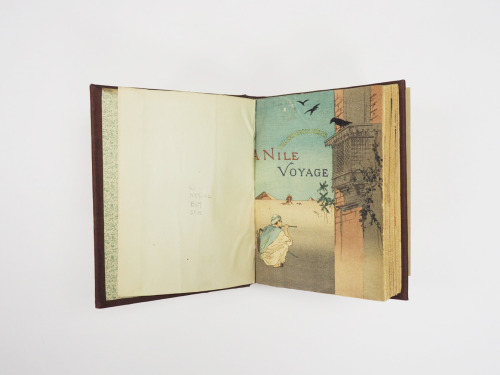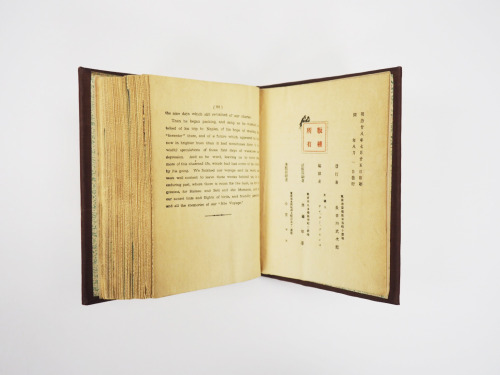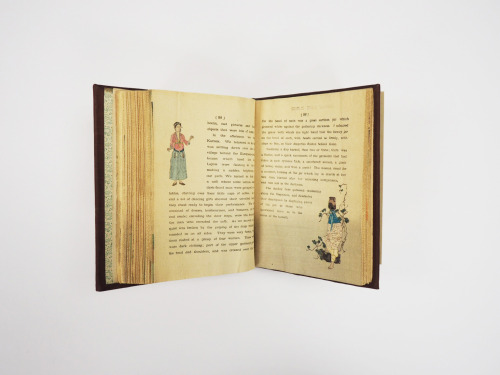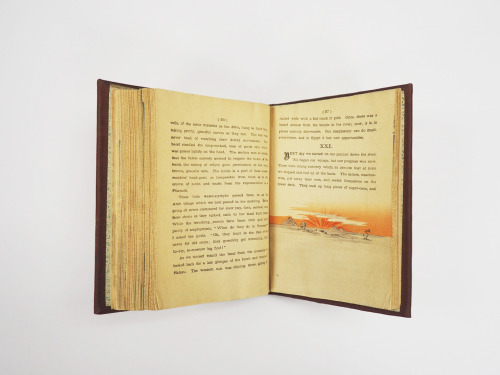Ancient Egypt as seen through western eyes is mostly monumental and remote, distant in time and over
Ancient Egypt as seen through western eyes is mostly monumental and remote, distant in time and overwhelming in scale. The earliest western illustrations and photographs of Egypt regularly emphasized size and stillness; romantic artists of the nineteenth century frequently placed people in vast desert landscapes—the figures small and insignificant, lost in the deep antiquity of an unchanging land.This grand vision of Egypt is so firmly fixed in western culture that discovering a different interpretation comes as a revelation. Fortunately, the Brooklyn Museum Wilbour Library of Egyptology owns a rare treasure that offers an alternate view. A Nile Voyage of Recovery, by Charles and Susan Bowles was published in Japan by Hasegawa Takejirō [長谷川武次郎 in 1896. Hasegawa was Japanese publisher active in the late nineteenth century who specialized in books in European languages, often for Japan’s tourist trade and resident foreign community, which included many English missionaries. The volume is part of the Red Cross series. During this time period, the Red Cross was active in setting up libraries and creating publications for soldiers in hospitals and recovery centers around the world.Many of Hasegawa’s early books were in the form of chirimen-bon (ちりめん本) or crêpe paper books. Chirimen, or crepe, is a Japanese textile with a soft, slightly wrinkly texture that’s often used in Japan to make kimonos, or for wrapping cloth. Hasegawa used the material to produce small, delicate books that can be held in the hand with the pages unfolding easily like fabric.Our chirimen-bon of A Nile Voyage of Recovery is illustrated with graceful, color woodblock prints of Egyptian scenes and adorned with exquisite typography. The images are gentle and intimate, emphasizing details and delicate color. Even a portrayal of the great pyramid gives more page-room to rays of light and the sun rather than the monuments. The Sphinx does not dominate; it’s rather an integral part of the landscape.Why study this human-scale Egypt? Because the purpose of art after all is to unsettle the conventional view—and whenever we see the world through other eyes, we see something new.Posted by Roberta Munoz Photos by Brooke Baldeschwiler -- source link
Tumblr Blog : brooklynmuseum.tumblr.com
#bkmlibrary#library#rare book#egypt#japanese#chirimen#crepe#japanese textile#books#fabric#egyptian#treasure#wilbour library#highlight#hasegawa takejiro#japan#red cross



